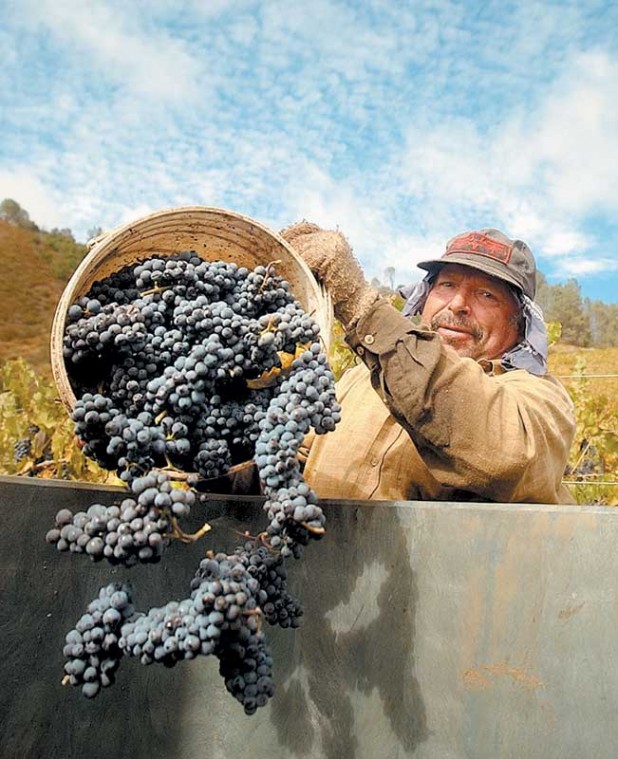Hollister
– Although most local winemakers didn’t harvest as many grapes
as they did in 2005, vintners are confident their 2006 wines will
be long remembered for their quality.
Hollister – Although most local winemakers didn’t harvest as many grapes as they did in 2005, vintners are confident their 2006 wines will be long remembered for their quality.
San Benito grape prices should remain unchanged, and the local yield is expected to reflect a statewide tonnage drop once the county crop report is completed in late March, said Paul Matulich, San Benito County agricultural commissioner.
The U.S. Department of Agriculture released a preliminary grape crush report for California last week, showing a 20 percent drop in yield. In 2005, the state produced 3.7 million tons, its largest ever wine grape harvest. The preliminary report shows state growers produced 3.1 million tons in 2006, a harvest closer to average in size.
There are approximately 3,700 acres of grapes in San Benito. In 2005, growers here harvested 16,818 tons of grapes, worth $19.9 million, according to the agricultural commissioner’s office. In 2004, winemakers harvested 12,072 tons, bringing in $18.9 million.
White grape varieties grown in San Benito County include chardonnay, pinot gris, pinot blanc, aligote and viognier. Red grape varieties include pinot noir, negrette, cabernet franc, zinfandel, syrah, cabernet sauvignon and merlot.
Matulich said weather contributes heavily to yield quantity and quality. He added that local vintners were pleased with the 2006 yield.
“No one was complaining about last year even if their tonnage was down. Their quality was better and they were able to make a more quality wine,” he said.
Local growers saw wild weather in 2006, including record-breaking highs in July and a long, cool fall that delayed the grape harvest.
One exception to the statewide trend is the pinot noir grape variety, which Josh Jensen, winemaker and owner of Calera Wine Company, began growing in San Benito County more than 30 years ago.
“Pinot noir was up statewide 11 percent,” Jensen said. “Pinot noir for us is about 75 percent of our total acres.”
The hot summer temperatures wreaked havoc on such varieties as zinfandel, which has a thin skin, said Frank Leal, winemaker and owner of Leal Vineyards in Hollister.
“Some of the berries will pop like a blister from the heat and the juice will get in between the other berries,” Leal said.
The juice not only causes rot, but attracts pests, such as birds and yellow jackets, that ruin the grapes. Leal Vineyards lost six to eight tons of zinfandel grapes, he said.
Although tonnage is down 20 to 25 percent at Leal Vineyard, quality is up, Leal said.
“It looks good so far,” he said. “Once the ’06s get released, which won’t be for another year or two, you will see a difference.”
Jensen said the quality of Calera’s grapes is great and the yield was up due to perfect conditions for pinot noir.
The winter rains filled the winery’s reservoirs, he said, allowing for more irrigation in the summer.
The lack of rain in May and June, when the crop was flowering, also contributed to the yield, Jensen said. Also, healthy vine growth in 2005 carried over to the 2006 season, he said.
The cool fall temperatures allowed the grapes to hang on the vines longer, creating more complex characteristics, Jensen said.
“We’re very happy with the quality,” he said.
Michael Van Cassell covers public safety for the Free Lance. He can be reached at 831-637-5566 ext. 335 or mv*********@***********ws.com.










